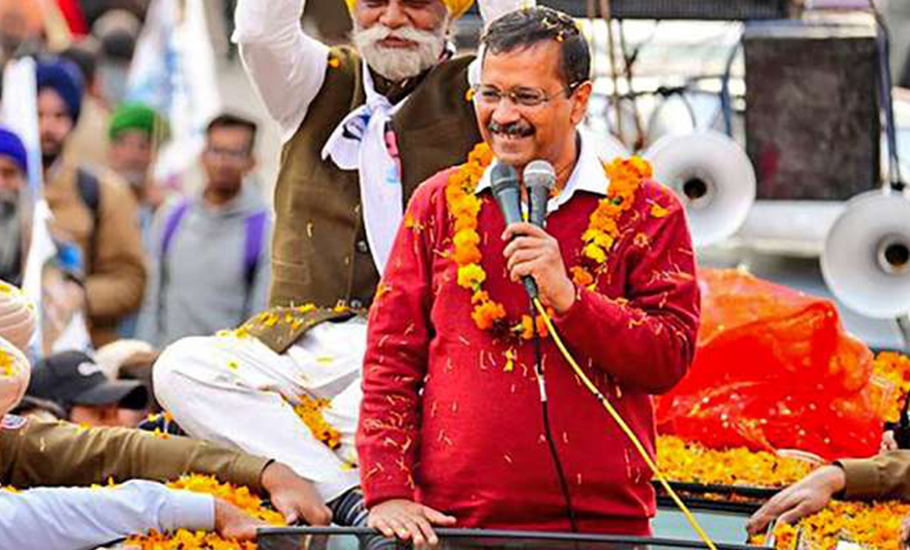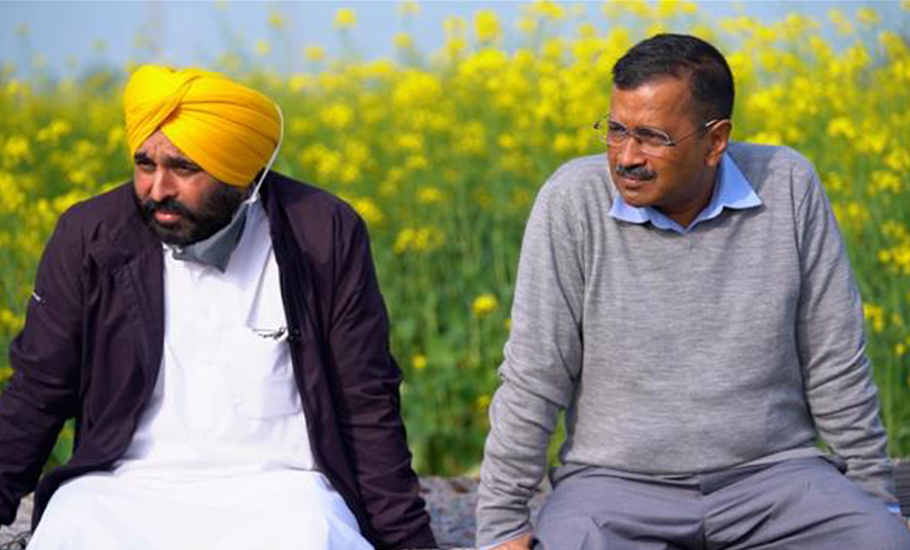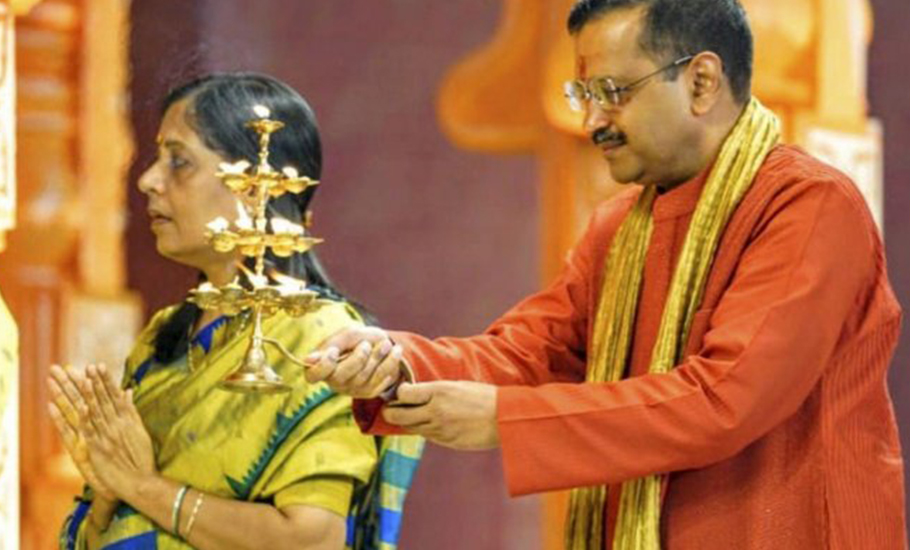
- Home
- News
- Analysis
- States
- Perspective
- Videos
- Education
- Entertainment
- Elections
- World Cup 2023
- Features
- Health
- Business
- Series
- Economy Series
- Earth Day
- Kashmir’s Frozen Turbulence
- India@75
- The legend of Ramjanmabhoomi
- Liberalisation@30
- How to tame a dragon
- Celebrating biodiversity
- Farm Matters
- 50 days of solitude
- Bringing Migrants Home
- Budget 2020
- Jharkhand Votes
- The Federal Investigates
- The Federal Impact
- Vanishing Sand
- Gandhi @ 150
- Andhra Today
- Field report
- Operation Gulmarg
- Pandemic @1 Mn in India
- The Federal Year-End
- The Zero Year
- Premium
- Science
- Brand studio
- Home
- NewsNews
- Analysis
- StatesStates
- PerspectivePerspective
- VideosVideos
- Entertainment
- ElectionsElections
- Sports
- Loading...
Sports - Features
- BusinessBusiness
- Premium
- Loading...
Premium

What next for AAP? Kejriwal must be more than Modi’s ‘benign’ version

This year is an important landmark for Arvind Kejriwal. Ten years ago in 2012, on October 2, a day consciously chosen for its symbolism, he stood alongside colleagues of the ‘India Against Corruption’ movement and declared his intentions to form a political party. It was launched on November 26, the Constitution Day, thereby establishing a symbiotic link with the Father of the Nation and...
This year is an important landmark for Arvind Kejriwal. Ten years ago in 2012, on October 2, a day consciously chosen for its symbolism, he stood alongside colleagues of the ‘India Against Corruption’ movement and declared his intentions to form a political party. It was launched on November 26, the Constitution Day, thereby establishing a symbiotic link with the Father of the Nation and the constitutional principles of India.
This is being superficially furthered now by Bhagwant Mann’s decision to take the oath of office in Khatkar Kalan, Bhagat Singh’s birthplace, instead of the Raj Bhawan as per standard practice. Furthermore, he will direct that Punjab government offices will henceforth display pictures only of Bhagat Singh and BR Ambedkar. Yet, as the party prepares to take a big leap it will have to demonstrate its commitment to its founding principles more in action than through symbolism.
Already, there is erosion in the spirit of collectivism that was AAP’s hallmark at the time of its foundation and there is a move towards personalisation and construction of the ‘Kejriwal cult’. Perhaps it is a shift the party has made from idealistic politics to recognition that Indian elections are personality driven, and not by issues. As a result, it is necessary to erase the image of the ‘muffler man’ as a representation of the common person and elevate the AAP leader to being a leading member of the power elite.
In a polity dominated by parties that are grand old ones, either on their own or because of drawing their legacy from decades-old parties, organisations or movements, AAP is a bit of an oddity. Its spectacular success in Punjab, a state noted for its well-established bipolar polity, is no mean achievement as it comes within less than a decade of its formation.
Besides the party’s modest ‘opening the account’ in Goa (two seats and 6.8 per cent vote share), its singular success remains in Delhi where the party has comfortably settled into governing after a bumpy, perpetually confrontationist start in 2013 and again in 2015.
Chances of the BJP returning to power in this ‘partial’ state appear remote for some time to come. These victories suggest that Indian voters are willing to look for something ‘new’ and if the party is able to administer ably and perform creditably in certain key sectors – as it has done in education and health in the NCT–voters are willing to renew their contract with the party.
People of Punjab reposed faith in the AAP not just because of disenchantment with Shiromani Akali Dal (SAD) and the Congress, but also because in people’s perception, Kejriwal ‘delivered’ in Delhi. The performance of Mann’s government could pave the way to other states thereafter.

In a situation where the BJP’s domination is near complete except for some heartland states and those situated on the Coromandel Coastline and with the Congress continuing to implode, it is natural to expect that the AAP will look beyond its present strongholds. But Kejriwal has to scale up his ambition gradually and not be the man in a hurry he has appeared to be in the past.
That the Delhi Chief Minister was interested in a national role and not restricting himself to the Indian capital’s local politics became evident in 2014 when he chose to contest against Prime Minister Narendra Modi from Varanasi in 2014. Although Modi won the seat by securing more than 56 per cent of popular vote, Kejriwal was runner-up ahead of candidates from the Congress, the Samajwadi and the Bahujan Samaj parties. The development indicated his potential to emerge as an eventual challenger to Modi. It may not happen immediately, but the process received a push with the Punjab verdict.
But there are several challenges before Kejriwal. Failure in meeting these will hinder the party’s emergence in other states as a political alternative to entrenched parties. The first test is to manage the complex social maze in Punjab, between Hindus and Sikhs on the one hand and between the dominant Jat Sikhs and aspirational scheduled caste communities on the other, both Sikhs and Hindus. In a state where people take pride in ‘Punjabiyat’, AAP erred initially by allowing allegations to be made against it for links with separatists.
Besides that, the biggest challenge is to fix the agrarian economy in the state while simultaneously diversifying the character of the state’s economy. The AAP will also have to placate the farming community who remain an aggrieved lot despite the Centre repealing the farm bills. Kejriwal will have to negotiate charges of duplicitous politics because the Delhi government quietly notified one of the three farm laws before the state assembly passed a resolution demanding that all the laws be repealed. There is also the added divergence between perspectives of Punjab’s farm sector on disposal of agri-waste, especially parali (stubble) burning and the viewpoint of Delhi’s people because of the resultant smog.
There are also several other issues that have to be resolved to people’s satisfaction–from state government employees looking for their employment to be regularised to youth looking for well-paying jobs in a tight market scenario, besides expectations of industries to improve ease of doing business.
A self-made political leader such as Modi, as against someone who’s inherited the position, Kejriwal has to be open to expertise and inputs from sector experts. Instead of just being an alternative because of the poor performance of entrenched parties, the Delhi Chief Minister and his party have to get the backing of voters elsewhere because of holding a promise of betterment.
Kejriwal’s post-ideology orientation has enabled him to gain the backing of those who have no problems with the BJP’s politics but are fatigued by its inability to fix things. His dogged refusal to stand with anti-CAA protesters and performing Diwali puja in public also televised alongside his ministers and wife has enabled him to swim alongside the Hindutva narrative even though he is sympathetic to religious minorities. But this has been limited to matters of faith and not to their political rights. He clearly chooses to stay out of contentious political issues.

Kejriwal will first eye the anti-BJP space in Gujarat that goes to polls later this year. His party will act as a magnet for the disgruntled Congress leaders who now see no future in and with the party but do not wish to join the BJP and compromise their ‘secular’ credentials. But can it make a significant dent by playing on the same ideological side of the political field?
For a long time, every non-BJP party has pandered to soft-Hindutva. But as experiences since 2014 demonstrate, there are obvious limitations to such strategies, especially in states in north and western India. In the electorate, a significant section of voters, even from the majority community are not supportive of Hindutva politics and they either do not turn up for voting because of cynicism or the anti-BJP vote gets divided. Their support, however, has to be secured firmly and this cannot be done by ideological ambivalence.
Unless he takes a position against the BJP on divisive issues, Kejriwal risks being a leader of a ‘BJP lookalike’ and will not be able to be the fulcrum or A-team of a staunchly secular anti-BJP opposition front.
Additionally, to expand geographically, the AAP shall have to develop a widespread party network and overcome the limitations of having started as an urban-based party. The opportunities are there but there are several threats. While the party cannot prevent external ones, Kejriwal has to ensure that internally he minimises dangers in the path of growth. For this he has to become more democratic and not be a ‘benign’ version of Modi or other opposition leaders who control their parties with an iron thumb.
(The writer is a NCR-based author and journalist. His latest book is The Demolition and the Verdict: Ayodhya and the Project to Reconfigure India. His other books include The RSS: Icons of the Indian Right and Narendra Modi: The Man, The Times. He tweets at @NilanjanUdwin)

